| |
|
 |
|
| |
"Preface" in James
Laughlin, Byways: A memoir : Edited
with an introduction by Peter Glassgold ; Preface by Guy Davenport. (New
York: New Directions, 2005), pp. ix-xii. "First published clothbound and
as New Directions Paperbook 1000 in 2005" (verso t-p)
"These fragments of an autobiography were written at
Meadow House in Norfolk, Connecticut, between 3 a.m. and dawn, when the
cook arrived to serve James Laughlin his breakfast of blueberry muffins
and tea. He was not planning an orderly account of his eighty years,
only those memories that came to him in his insomnia and got him out of
bed and down to his typewriter, where he measured out phrases in the
neat short lines that William Carlos Williams had shown him how to
write.
* * *
He grew up rich and Presbyterian in a smoky steel town
from which Gertrude Stein's family had fled (to Oakland) and Mary
Cassatt's (to Philadelphia and Paris). George Washington had begun his
military career in Pittsburgh when it was a log fort besieged by French
and Indians. . . .
* * *
. . . Laughlin sought and found.
It was at tea with Edith Sitwell (coal tenders rumbling in the mines
beneath her country house) that he heard the name Dylan Thomas. Eliot
introduced Djuna Barnes; Pound, William Carlos Williams; Thomas Merton,
Nicanor Parra; Henry Miller, Hermann Hesse. Borges had to bounce off
French recognition. Laughlin also played a part in the resuscitation of
Henry James, E. M. Forster, and Faulkner. . . ."
* * *
.
|
| |
|
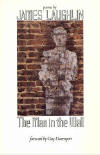 |
|
| |
| "Foreword" in James Laughlin, The
Man
in the Wall. Poems by James Laughlin, (New York: New Directions, 1993), pp.
vii-ix. New Directions Paperbook 759. |
| |
|
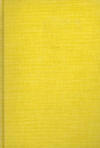 |
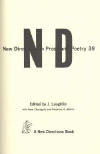 |
| |
|
"Scripta Zukofskii Elogia" as
part of "Tributes to Louis Zukofsky (1904-1978)" by Hugh Kenner, Celia
Zukofsky, and David Gordon, eds., in James
Laughlin, ed., with Peter Glassgold and Frederick R. Martin.
New Directions in Prose and Poetry
39. [New York: New Directions, 1979],
pp. 159-164. Clothbound edition. Published also in 1979 as New
Directions Paperbook 484.
This essay was first published in Paideuma [Orono, ME: University of
Maine] 7:3 (Winter 1978) 394-399.
An elegy for poet Louis Zukofsky (1904-1978)
comprising 36 paragraphs, numbered 1 through 25, some of which with
sub-paragraphs numbered accordingly, 1.1, 1.2, 1.3, 1.4, and so on.
Excerpts:
1
Eighteen songs set to music by his wife [Celia] and fifty-three lines of
type in six blocks of prose; this is Zukofsky's Autobiography, not
his most eccentric work but certainly foremost as an eccentricity among the
world's autobiographies.
* * *
1.3
The city in which Zukofsky lived he pictured by translating Catullus, as
effective a recreation of the color, odor, and tone of its original as
Orff's Carmina Burana or Fellini's Satyricon.
1.4
The home in which Zukofsky lived is A. It contained two musicians, a
poet, many books, and a television set.
* * *
2.2
The most original meditation on Shakespeare since Coleridge. [Davenport here
is referring to Celia and Louis Zukofsky's Bottom: On Shakespeare.]
* * *
6
He taught at a polytechnic institute, saw the Brooklyn Bridge daily for
thirty years, was fascinated by the shapes of the letter [s] A
(tetrahedron. gable, strut) and Z (cantilever), and designed all his poetry
with an engineer's love of structure, of solidities, of harmony.
7
Le Style Apollinaire. LZ is a scrupulous punctuator, with correcter
parentheses, dashes, and semicolons than anyone else. Punctuation became
dense as the railroad tracks went down, corresponding to their points,
switches, signals, and semaphores. With the airplane, trackless and free, we
get Apollinaire with no punctuation at all, Eliot, Pound, Cummings.
* * *
13
He had the gift of the laconic. To Pound praising Mussolini in 1939, he
said, 'The voice, Ezra, the voice!' There must be hundreds of critical
postcards like ones I've had from him. Of my Archilochos, 'Something new!'
Of Flowers and Leaves, 'Yes, but where the passion?' Of my
Herakleitos, 'Jes' crazy!'
* * *
22
Two lives we lead: in the world and in our minds. Only a work of art can
show us how we do it. The sciences concerned with the one aren't on speaking
terms with those concerned with the other. Lenin once said that Socialism
would inspire in the working man a love of natural beauty. One of my
colleagues, a professor, once observed in front of my crackling, cozy
fireplace that it was such a day as one might want to sit in front of a
crackling, cozy fireplace if only people had such nice things anymore. I
thought I was losing my mind: he really did not notice that he was sitting
in front of a fire. His talk runs much to our need to expand our
consciousness. LZ in his poetry is constantly knitting the two worlds
together, fetching a detail from this one to match one in the other. And he
saw into other minds with a lively clarity.
* * *
Note: My copy of this
book has a book plate: Harvard College Lamont Library, stamped in red ink
'WITHDRAWN'. Harvard University Library property stamp dated 'Feb 05
1980'. I would like to think Lamont Library withdrew this book because it
was a duplicate copy.
|
| |
|
 |
|
| |
[Prospectus essay] in James Laughlin, Stolen
&
Contaminated Poems. [Isla Vista, CA:] Turkey Press, MCMLXXXV [1985].
48-pp. photo-offset paper bound edition.
"Many Thanks to Robert Fitzgerald and W.
H. Ferry for their editorial assistance. Cover and design by Harry
Reese." (verso title page)
"This edition was photo-offset for the
author from the letterpress edition set in Dante type ad printed at
Turkey Press by Sandra Liddell Reese" (colophon p [49])
Davenport's essay:
"Is this deft and
effortless master of the epigram, who asks the woman at the tobacco
shop about Duke Federico d' Urbino's nose and has a radioactive
curiosity about the men and women who wrote and figure in poetry the
same James Laughlin who has shaped the literary sensibilities of three
generations of readers? Yes and no. Real poets are always somebody
else. Chaucer signed waybills for bales of wool, and Sidney rode under
flags behind the groan of drums. Cubism, Braque said, brought painting
within his capabilities. The reshaping of the classical epigram by
Pound, Williams, and Apollinaire brought that ancient art, with good
results and bad, within the capabilities of many, including James
Laughlin, sorting out from his other vast capabilities a whimsical
Mandarin poet whose fun (all mastery is joy) is to say, 'You didn't
think a poem like this could be written, did you?' Impossibility after
impossibility, he makes epigrams that nobody else could think of, much
less execute."
(back cover of this paperbound
edition)"
This copy annotated: "for Terry /
from Jas / (lotta E`z here)" (half-title page)
. |
| |
|
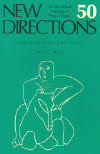 |
|
| |
"Wild Clover" in James Laughlin, ed.,
with Peter Glassgold and Griselda Ohannessian,
New
Directions in Prose and Poetry 50. (New York: New Directions, 1986), pp. 253-273.
"First published clothbound and as New Directions Paperbook #623 in 1986."
(verso-t-p following 'Acknowledgements')
Cover title: New
Directions 50: An International Anthology of Prose & Poetry; 50th
Anniversary Issue, 1936-1986
|
| |
|
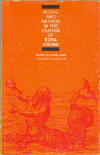 |
|
| |
|
"Pound and Frobenius" in Lewis Leary, ed.,
Motive
and Method in 'The Cantos' of Ezra Pound, (1954; reprint New York: Columbia
University Press, 1961), pp. 33-59. "A Columbia Paperback."
Published as part of the series, Columbia University
English Institute Essays.
GD's essay was read first at the 1953 meeting of the English
Institute at Columbia University.
|
|
|
|
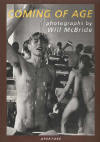 |
 |
|
|
"Ways of Being Human"
in
Coming
of Age: Photographs by Will McBride.
Introduction by Guy Davenport; Afterword by William Simon.
[New York:] Aperture, 1999. pp. 4- [7]
First edition.
. |
|
|
|
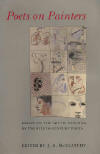 |
|
|
|
"Balthus" in J. D. McClatchy, ed.,
Poets
on Painters: Essays on the Art of Painting by Twentieth-Century
Poets. Berkeley, CA: University of California Press, 1988, 1990) pp.
233-245. "First Paperback Printing 1990" (verso t-p)
GD's essay on Balthus is
preceded by editorial commentary:
"'I'm a
left-handed poet,' says Davenport, 'and a right-handed prose-writer.' He
[Davenport] continues to publish poems, and translations in verse, and
actually began as a poet -- his book-length Flowers and Leaves
appeared in 1966. 'Its failure to attract any notice whatsoever convinced
me that I should try prose.' His stories have since brought him to
prominence. They are not conventional stories but what he calls
'assemblages of history and necessary fiction.' Some of the history is art
history; some of the 'necessary fiction' is -- and neatly defines --
interpretation. Several of Davenport's stories, such as 'Tatlin!', 'Au
Tombeau de Charles Fourier,' and 'The Death of Picasso,' are in part
fanciful commentaries on painters, with asides like: 'Cezanne comes from
Virgil. Picasso takes up the Classical just when it was most anaemic,
academic, and bleached of its eroticism. . . . Traverse Picasso with
two vectors: the long tradition of the still life (eating, manners,
ritual, household) and the pastoral (herds, pasturage, horse, cavalier,
campsite).' Or this: 'Matisse began to include the edges especially of
women as they are seen more to the left than you would see if the right is
there and a little more to the right than you would see if the left is
here, a primitive and intelligent way of looking.' Among the subjects of
Davenport's brilliant, eclectic essays are Pavel Tchelitchew and Grant
Wood (whom he wants to see as the American Memling). In writing about
Balthus, Davenport is writing about the painter who has most attracted --
by his secret erotic grammar and allegorical literalism -- contemporary
poets, and he is thereby offering an oblique look at poetry too. Asked to
name the art criticism he himself likes best, he lists 'les frères
Goncourt on Hokusai and Hiroshige, Malraux's Goya, Adrian Stokes on
Duccio, Gertrude Stein on Raul Dufy (also on Picasso), Hugh Kenner on
Wyndham Lewis, Marilyn Aronberg Lavin on Piero della Francesca's The
Flagellation." (pp. 233-234).
|
|
|
|
[Cover Drawing] in Terje Maerli, ed.,
Samuel
Beckett: En Artikkelsamling, (Oslo: Universitetsforlaget, 1967).
Note on verso of title page: "Omslaget er tegnet av Guy
Davenport ... ."
|
|
|
|
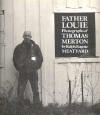 |
|
|
|
|
"Tom and Gene" in Barry Magid, ed.,
Father
Louie: Photographs of Thomas Merton by Ralph Eugene Meatyard, (New York:
Timken Publishers, 1991), pp. 23-36.
. |
|
|
|
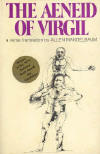 |
|
|
|
[Drawings] in Allen Mandelbaum, trans., The
Aeneid of Virgil: A Verse Translation
by Allen Mandelbaum. Drawings by Guy Davenport. (Berkeley: University of California
Press, 1971)
"Jacket art by Leonard
Baskin" (dust jacket rear inner fold).
GD drawings (images reduced
in size):
Roman sailing ship with
oars ; a dolphin below. p. [xvi]
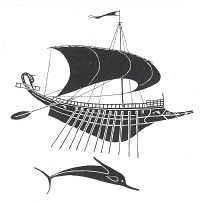
Goddess Juno ? p. 1
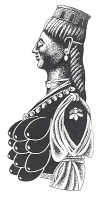
Charioteer driving a team
of four horses / the word ' R O M A' p.
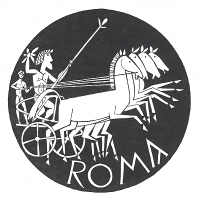
|
|
|
|
|
|
|
|
[Untitled Essay] in Matthew Marks, comp.
Artist’s Sketchbooks, (New
York: Matthew Marks Gallery, 1992), unpaged [3 pp. of a 54-page
monograph]
"This catalogue accompanies an exhibition held from
March 20 to May 4, 1991 at 1018 Madison Avenue, New York, New York 10021."
(verso t-p)
"I am honored that Guy
Davenport agree to write for the catalogue. His willingness to undertake
this project, in spite of the rapidly approaching deadline, is much
appreciated." (Foreword by Marks)
Artists represented in the
Exhibit:
| Carl Andre |
Jackson
Pollock |
| Frank Auerbach |
Ad
Reinhardt |
| Louise Bourgeois |
Gerhard
Richter |
| Richmond
Burton |
Robert
Ryman |
| John
Chamberlain |
Julian
Schnabel |
|
Francesco Clemente |
Richard
Serra |
| Lucian
Freud |
David
Smith |
| Philip
Guston |
Myron
Stout |
| Gary
Hume |
Cy
Twombly |
| Jasper
Johns |
Andy
Warhol |
|
Ellsworth Kelly |
Lawrence
Weiner |
| Brice
Marden |
Terry
Winters
|
Excerpt from GD's essay follows:
IN LE CORBUSIER'S many sketchbooks, as in
Leonardo's, there is as much writing as drawing. These two complex minds
used sketchbooks to study, to meditate, to work out ideas, to record the
germ of image, to doodle. Sketchbooks are as revealing as diaries,
letters, records of conversations. Kafka's diaries are as well a
sketchbook for stories.
Corbusier the graphic artist and painter never
achieved in finished work the lively grace of his sketchbook pages. Some
of Leonardo's finest drawing is in the codices. Corbusier is his
architecture, built and unbuilt, his books, his theories. But to know
these without knowing the sketchbooks is to fall short of what Corbusier
left as a heritage. To some degree this is true of many artists. Van
Gogh's sketches in his letters, and his sketchbooks modify our knowledge
of his painting.
There are many things called sketchbooks.
There is the amateur's sketchbook, considered throughout the eighteenth
and nineteenth centuries to be a part of an educated person's skills. The
camera has displaced it. Gerard Manley Hopkins sketched, Ibsen sketched,
Hugo, Queen Victoria, everybody.
Then there is the field notebook -- Van Gogh
wading into mud and traffic, drawing; courtroom reporters; battlefield
artists; David making his hasty sketch of Marie Antoinette on her way to
the guillotine.
Next, the study book, worked on as a record
and as a generator of ideas. This kind of sketchbook goes back to Villard
de Honnecourt, mid-thirteenth century, to Pisanello, the Pepysian
manuscript at Cambridge, which is a pattern book like Hokusai's printed
sketchbooks, images for other artists to consult, study, and copy. This
kind of manual is apt nowadays to be photographic but nonetheless a true
sketchbook.
The peculiar claim of the sketchbook on our
attention is in its showing us inceptions and developments. Our century
has been curious to know how things come to be. There are more sketches
for Picasso's "Les Demoiselles d'Avignon" than for the oeuvres of all
other painters. Wittgenstein’s notebooks have elicited as much study as
his finished texts. In a sense, Wittgenstein has left us a progression of
sketches toward a philosophy rather than a philosophy. The poet Louis
Zukofsky carefully kept, and deposited at the Harry Ransome Research
Center in Austin, Texas, the intricately labored drafts of his long poem
“A”, with some idea, we can only suppose, that the gestation of his work
and its transformation from draft to draft, is not only significant but
complementary to the work. The subject of the poem is indeed work in all
of its senses.
Pound left his Cantos as a draft,
unfinished, as if the primacy of the sketch ought not to be superseded.
This feeling is in Cezanne's latter [sic, in recté later] canvases and
watercolors, and in practically all painters after him.
The grace of spontaneity, a new kind of
attention to process and becoming, innocence at the beginning of things --
reason after reason can be thought of to account for our delight in the
preliminary. We might note that once Darwin and the atomic theory shaped
our ideas, the encompassing idea of evolution changed the way we think
anything. The great question of our time is, “How did it come to be?”
It is easy to find Francis Ponge's notebooks
in which he composed his beautiful poem “The Meadow” as interesting, if
not more interesting, than the poem itself. Every work of art is at the
still center of two processes, that of its making, and that of its
comprehension. These can be symmetrical, a folding in and folding out.
It interested Ponge, when he wrote The Making of “The Meadow”, to
establish this symmetry himself, to run the film backwards, explaining how
it all came to be.
For most of the time, however, we have no such
record of beginnings and gestations. Thus sketchbooks, when they exist,
along with notebooks and journals, are rare and privileged perspectives, a
category all to themselves.
Paul Valery's notebooks, Gide's journals,
Roethke's “straw for the fire” (as he thought of his working notes),
Joyce's mysterious lists and schemata, Gaudier’s life-class studies --
these are a record of the work that went into a work,
Samuel Butler carefully revised his notebooks
as a polished work, much as many artists have used the sketch as a genre
in itself -- Rodin, for instance, in his quick studies of cathedrals and
models, We can add Jules Pascin, Braque, Klee, Avigdor Arikha. There is a
liveliness in Augustus John's T. E. Lawrence, Joyce, and Ronald Firbank
that no finished oil of John has. The subjects were all fugitive;
Lawrence and Firbank uncooperatively shy, Joyce impatient and annoyed.
Sketchbooks tend to be rich in sleeping subjects (Wyndham Lewis, of Pound,
his dog and his wife; Cocteau, of Radiguet).
A notation is by etymology a sign made the
moment something becomes known. The notarius wrote down the
witness's statement in a Roman Court. Early on, notatio took on
the meaning of “sharp observation, scrutiny.” Beside several sketches
Goya wrote, “I saw this.”
Visual annotation is close to writing.
Cocteau said of his drawings that they were writing untied and retied in
a different way. All drawing is an act of decisions, immediate revisions,
split-second deliberations; that is, intelligence at its most decisive,
creative potential. “Rest before labor,” said Blake. He might well have
said, “Play before work”, for the sketchbook is both playground and
testing place, the free exercise of pure intellect whether in doodling
(the draftsman's day dreaming) or in copying nature with precision. The
creative mind is prodigal, and its extravagance is at home in the
sketchbook, before its submission to the economy of the finished work of
art.
|
|
|
|
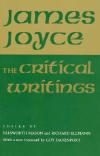 |
|
|
|
|
"Foreword to the Paperback Edition" in
Ellsworth Mason and Richard Ellmann, eds., The
Critical Writings of James Joyce,
(Ithaca, NY: Cornell University Press, 1989), pp. 3-6. |
|
|
|
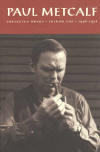 |
|
|
|
"Introduction" to
Paul
Metcalf: Collected Works, Volume One 1956-1976. Minneapolis, MN: Coffee
House Press, 1996, pp. [i] - v.
Contents:
- Introduction
- Will West
- Genoa
- Patagoni
-
The Middle Passage
- Apalache
"Dust jacket
photograph [of Paul Metcalf] by Jonathan Williams" (verso t-p)
|
|
|
|
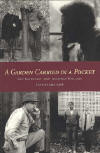 |
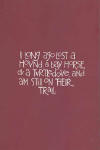 |
|
|
"Note" in Thomas Meyer, ed., A
Garden Carried In A Pocket:
Guy Davenport [and] Jonathan Williams; Letters 1964--1968. Haverford, PA:
Green Shade [and] James S. Jaffe Rare Books, 2004, pp. 9-10. Book has 137 pp.
followed by 4 pp. of drawings. Includes photos of GD and JW.
Colophon:
This book was designed by
The Grenfell Press and printed by
Trifolio, Verona, Italy. The paper is Old Mill; the type is Minion.
Published in and edition of 526, of which 500 are bund in wrappers; of the
500, 100 are numbered and signed by the authors. 26 are bound in boards,
lettered A to Z, and signed by the authors.
Note: my copy (in wrappers)
is signed by Thomas Meyer and Jonathan Williams. It is a gift received from
Tom and Jonathan, during my visit to Skywinding Farm, Highlands, NC, on the
beautiful, warm and sunny Saturday of 15 January 2005.
|
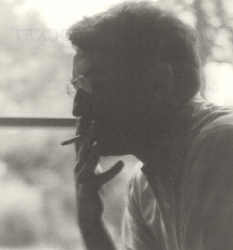 |
|
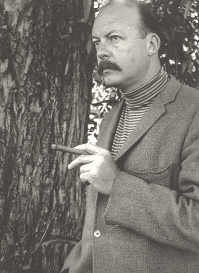 |
| GD, by Ralph Eugene
Meatyard, late 1960s |
|
JW, by Arnold Gassan,
Aspen Institute, 1967 |
Editor's note:
"Here we have two men the
perfection of whose craft has been wrought through the practice of
letter-writing. And striking, the immense admiration and respect each
holds for the other's work. And too, their differences of temper and
element. Imagine Catullus writing to Heraclitus, or Fauré listening to
Scott Joplin, Sherlock Holmes and Joel Chandler Harris dunking havercakes
in chili. So far their exchange covers a good third of the last century,
and almost any imaginable subject. Should I say 'object'? Such is the
clarity their sentences set forth. A remarkable combination, The Pillow
Book of Sei Shonagon interleaved with a Sears, Roebuck Wishbook,
domestic detail and courtly gossip, an elegance of observation, complete
with Jeffersonian vitas. What we have here in particular is onset and
blossoming, one of the most distinguished exchanges imaginable unfolding."
(Thomas Meyer)
. |
|
|
|
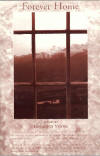 |
|
|
|
|
"Introduction" in Lenard D. Moore,
Forever Home,
with introduction by Guy Davenport and an Afterword by Fred Chappell, (Laurinburg, NC: St.
Andrews [College] Press, 1992), [unpaged, preceding "Table of
Contents"]. |
|
|
|
|
|
|
|
|
[Drawing] in Bradford Morrow,
Posthumes [broadside
poem]. New York, Grenfell Press, 1982.
I have two copies of this broadside, numbered #
___ and # ___ .
|
|
|
|
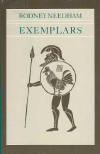 |
|
|
|
|
[Drawing] in Rodney Needham,
Exemplars,
(Berkeley, CA: University of California Press, 1985) 17 [Plate 1].
Drawing [p. 17, 'Plate 1'] entitled "Archilochus" is of poet with a
round shield with a rooster emblem. In his acknowledgements, RN note: "He
drew it originally for his translation Carmina Archilochi (University of
California Press, 1964), where it was printed in reverse. Here it appears with
'Archilochus' in his true attitude: facing proper to right, and right-handed; also,
the swastika is displayed under its auspicious aspect."
Rodney Needham's essay, "Archilochus and the Intimation
of Archetypes" was written as a contribution to an unpublished Festschrift
in honor of GD's 50th birthday, November 23, 1977.
|
|
|
|
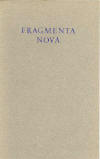 |
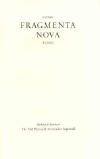 |
|
|
|
"A Note on the Text" in Denys Page, ed.,
Sappho
Fragmenta Nova [Prospectus] (Berkeley, CA: The Arif Press; Brookston, IN: The Twinrocker
Papermill, 1983), [pp. 4-5]. Unpaged [8 pp.]
Comment (verso half
title-page):
"The Arif Press of
Berkeley, California and Twinrocker Handmade Papers of Brookston, Indiana
are pleased to announce the publication of Fragmenta Nova;
being a group of newly identified fragments of the seventh-century BC Greek
poet Sappho. The issuance of these six poems supplements and brings up to
date her œuvre as represented by the Oxford University Press edition
of 1955.
The poems are in the
original language with the critical apparatus . . . printed in a second
color. Textual notes are also provided by the editor, the Oxford scholar,
Sir Denys Page. Readers desirous of reading all of Sappho that has survived
over two and a half millennia are directed to the admirable translations of
Guy Davenport: Archilochos, Sappho, Alkman: Three Lyric Poets of the Late
Bronze Age (Berkeley, 1980).
* * *
Excerpt from 'A Note on the
Text':
"Sappho lived and composed
songs in the city of Mytilene on the Aegean island of Lesbos around the last
decade of the seventh century before Christ. No whole poem of hers has
survived. It was the opinion of antiquity that she was one of the greatest
of lyric poets. Her music is lost forever, and all of her words except for a
dozen fragments coherent enough in their ruin on deteriorating parchment and
papyrus to give us a glimpse of the folk-song simplicity of her metric and
the startling brightness of her imagery. . . ." [p. 4]
|
|
|
|
|
|
|
|
|
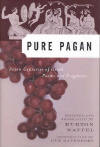 |
|
|
|
"Introduction" in Burton Raffel,
tr. Pure Pagan: Seven Centuries of Greek
Poems and Fragments. Selected and translated by Burton Raffel.
Introduction by Guy Davenport. New York: The Modern Library, 2004.
pp. [xiii] - xxii.
"This superb gathering of ancient Greek lyrics,
pungently translated by Burton Raffel, could not be more timely or more
timeless. The poems are by turns hilarious and heartrending, erotic and
elegiac, as fresh as the morning and shadowy as the dusk, yet always living,
inescapable, and wise. Guy Davenport contributes an arresting introduction
to this very welcome collection." (Robert Fagles, Translator of The Iliad
and The Odyssey -- dust jacket)
. |
|
|
|
|
|
|
|
|
"A Moral Lecture for Food Snobs, Gourmets, Epicures,
Health Food Nuts, Gourmands, and People Who Pick On Their Children for Gulping Rock &
Roll Jelly Kings" in Charles J. Rubin [et al.],
Junk Food, (New
York: Dial Press/James Wade, 1980), p. 47.
GD's "favorite junk food is Zinger's; not crazy about
Tab." (Author's Credits, p. 8)
|
|
|
| |
|
|
Back to Parts of
Books (All) |

























